Intel DX58SO X58 Express Chipset Motherboard Review
Board Layout

The initial impression that I got as I looked at the Intel DX59SO motherboard was that of quality. It is a very attractive board with a classy color scheme. It does not yell “look at me” with loud colors, but yet you still have to look at it just because of the beauty of the board. The blue color of the heatsinks and three of the four DDR3 slots complement the sleek black PCB. Let’s look a little closer…
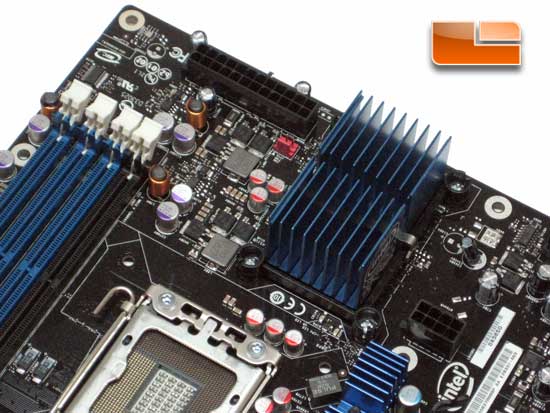
The top right of the board is just a little different than what we are used to. The DDR3 slots are actually rotated and set at the top of the board. It was not awkward at all, though. The Intel DX58SO motherboard supports DDR3 memory at speeds of 1600, 1333 and 1066 MHz in Triple Channel configuration. The 24-pin power connector is located at the top right edge of the board, and is in the optimum spot. Just under the power connector, we have the Intel X58 Express Chipset, which is covered by a decent sized heatsink which seemed to be doing a great job, as we had not issues with heat at all while using the board.
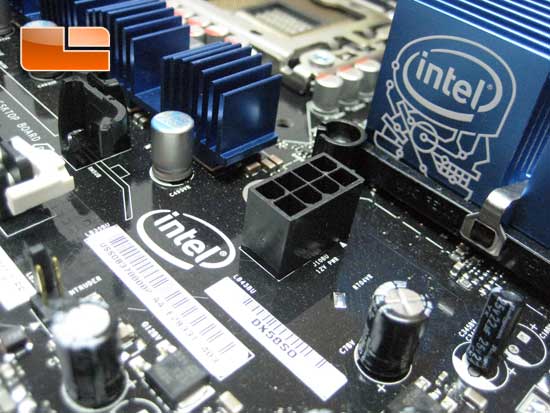
The placement of the 8-pi 12v connector was a little odd. It is located just under the Intel X58 Express northbridge in the middle of the board. That could make it a bit difficult for running the wiring from your power supply.

The bottom right location is where we find our SATAII connectors. The Intel board supports six SATA devices, and also provides the ability to run RAID 0, 1, 5 and 10. The Intel ICH10R southbridge is also located here and is covered by a small aluminum heatsink.
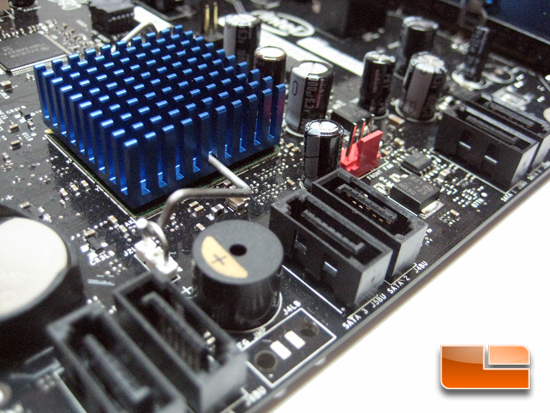
A closer look at the SATAII and the ICH10R southbridge…

The bottom left of the board is where we have the location of our PCI/PCIE slots. The Intel DX58SO board has one legacy PCI slot, two X16 PCIE slots that support Crossfire and SLI technologies, one X4 PCIE slot and two X1 PCIE slots. Next to the X4 slot at the top, we also have a 4-pin molex connector that gives extra power for those that will be running a multi-video card setup.
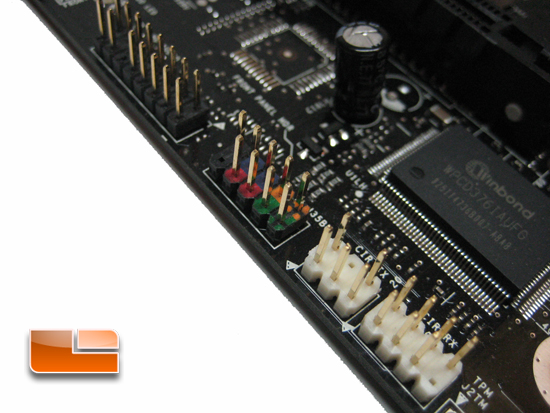
At the very bottom edge of the board in this area is our pin header for the front panel. It is color coded, which is always a nice touch and very helpful during setup.
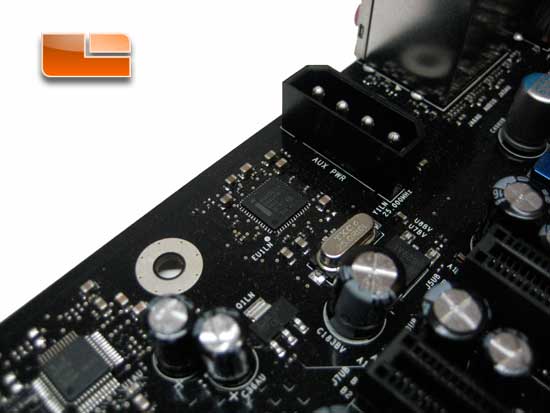
This area is also the location of our audio and LAN chips. The Intel DX50SO boards support Intel High Definition Audio using the ALC889 audio codec. LAN on the board provides gigabit speeds for the Intel Pro Network connection.
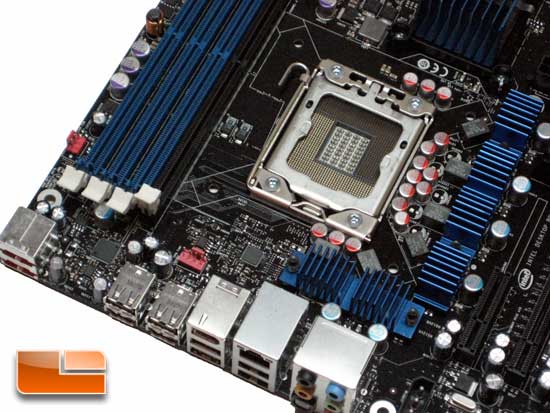
At the top left of the board we once again see the DDR3 slots. We also have the CPU socket here. The DX58SO is an LGA 1336 socket that supports Core i7 processors. There are also more heatsinks here covering the power mosfets on the board.
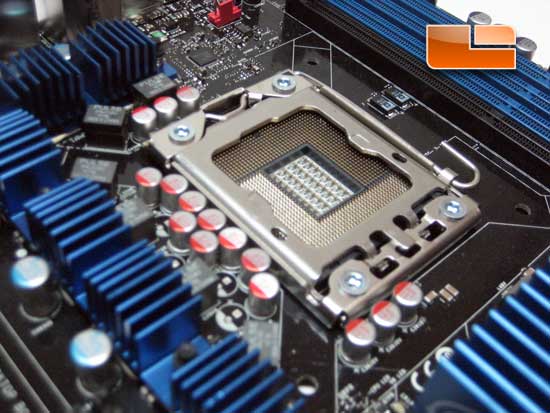
A closer look at the CPU socket shows that there is plenty of room for your cooling solution of choice.
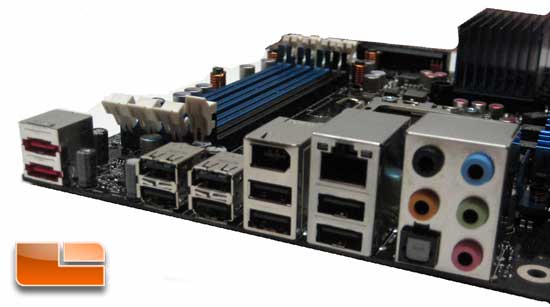
The back I/O panel gives us two eSATA ports, eight USB ports, a firewire port, your LAN port and then your audio ports. Missing? The legacy PS/2 connections for keyboard and mouse. It would be nice to see those being left on all boards, but that is just opinion!

Comments are closed.